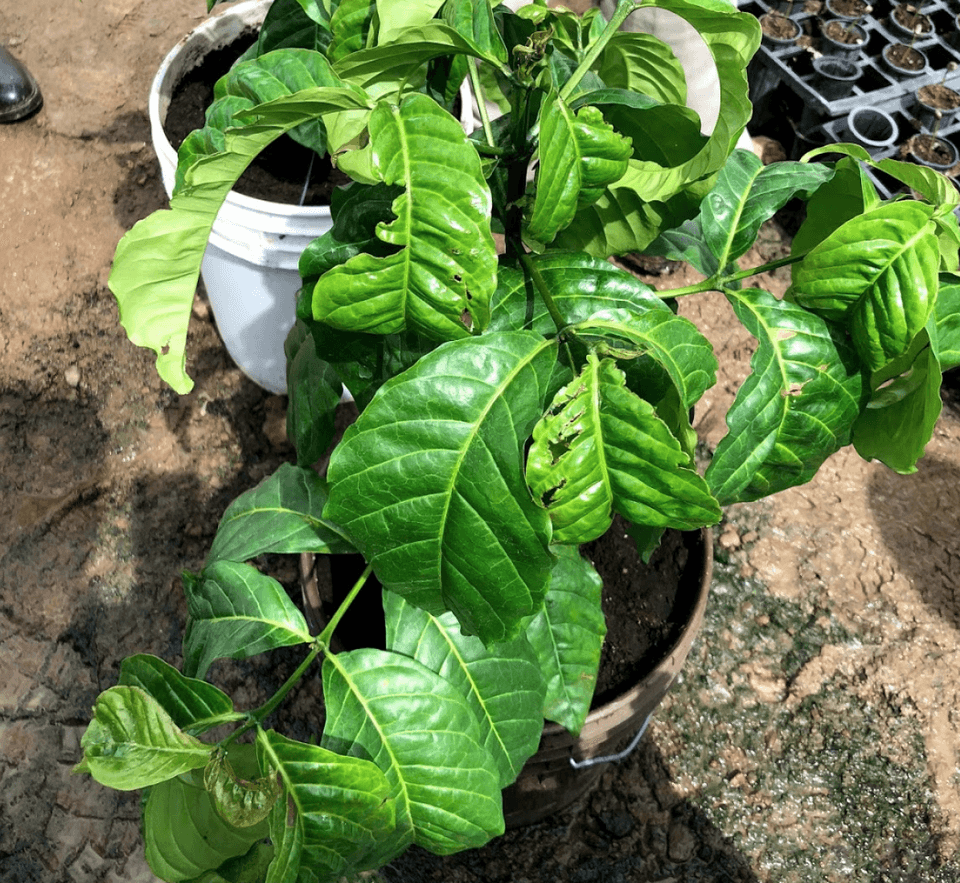A new Arabusta for the 21st century
Arabica varieties that contain Robusta genetics could help the coffee industry navigate modern challenges to production.
On the island of East Timor, sometime in the 1920s, an impossible legend was born: the Timor Hybrid. Somehow, a C. arabica plant and a C. canephora (Robusta) plant reproduced and created a natural hybrid offspring—an Arabica variety that contained Robusta genetics.
What made it legendary was the fact that this Arabica was resistant to coffee leaf rust, which no other naturally occurring Arabica is. Breeders spent much of the 20th century exploiting the Timor Hybrid to create new varieties resistant to coffee leaf rust—vast swaths of the world’s coffeelands are now planted in the progeny of these efforts, often called Sarchimors (Timor Hybrid x Villa Sarchi) and Catimors (Timor Hybrid x Caturra).

An example of a tetraploidized Robusta in La Cumplida, which is part of the Nicafrance foundation.
But the resistance to leaf rust provided by the Timor Hybrid is showing signs of breaking down. It’s time to try to create a new Arabusta—new Arabica varieties that contain Robusta genetics. World Coffee Research, together with partners from CIRAD and Nicafrance, is working to create new Arabustas that combine Robusta’s rust resistance and adaptation to higher temperature with Arabica’s high organoleptic quality. This is done by chemically inducing Robusta, a diploid that possesses two sets of chromosomes, to double its chromosomes so that it can successfully reproduce with Arabica, a tetraploid with four sets of chromosomes.
In an attempt to create this new Arabusta, a male sterile C. arabica was crossed with a tetraploid C. canephora T3751. As a result, 467 trees were planted, 7,422 vegetative growth data points were collected, and 24,462 leaf rust data points were collected. From this data, the best individual plant will be picked, back-crossed with Arabica, and then there will be two to three generations of selections.